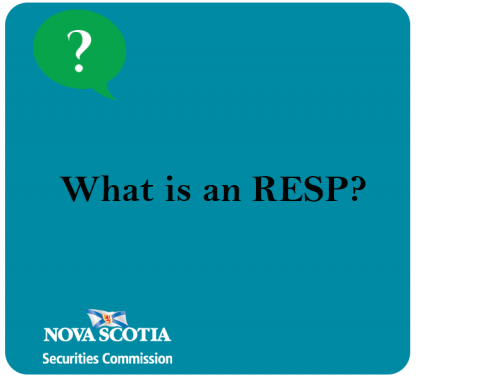Submitted by nsscadmin on

There was some media coverage on RESPs this week leading to some of our readers wanting more information on these type of investment accounts.
A registered education savings plan (RESP) is exactly what is sounds like. An account used to save for education. It could be for your child’s post-secondary education or an adult’s education. Age has no factor.
The real benefits of investing in an RESP is the access it provides to additional government funds you can use to more quickly bulk up your child’s education savings. By opening an RESP you gain access to the Canada Education Savings Grant. However, the grant is only available for plans where children are under the age of 17. This grant is a federally funded program that provides additional funds alongside those you invest in an RESP.
Here’s how it works. Through the Canada Education Savings Grant the government will match 20 per cent of your contributions per year up to $500. The maximum funds you can receive through the program is $7,200. Lower income contributors can sometimes qualify for more.
Once the person enrolls in a post-secondary institution the money in the RESP can be withdrawn. The money in an RESP grows tax free. The contributions are not tax deductible, but the interest and gains made are taxable when withdrawn. As most students have little income while in school, the RESP withdrawals generally have a lower tax burden.
RESPs can be open at most financial institutions, such as banks, credit unions, investment firms, etc., and are offered as individual or family plans. RESPs can also be opened through scholarship plan dealers. These are companies that only sell RESPs, which we covered in a previous blog post.
One difference when it comes to scholarship plan dealers is that they also offer what are known as Group RESP plans. Each group plan is different and comes with it owns set of rules and regulations. The plan’s rules and regulations must be outlined in a prospectus. You should always read and fully understand the prospectus before purchasing a RESP group plan.
As we previously stated…
“A scholarship plan dealer pools contributions from numerous investors into a Registered Education Saving Plan (RESP)to invest in scholarship plan units. When you join a group plan you agree to buy a set number of plan units. These units represent your share of the plan, and the maturity date of the plan is determined by your child’s birth date.
To maintain your standing and place in the plan you must make regular contributions. Failure to make your contributions can result in you being assessed financial penalties or be terminated from the group. As long as you stay in the plan until it matures you receive a portion of the pool’s earnings to put toward your child’s post-secondary education.”
If you are thinking about entering into an RESP group plan be sure to do your due diligence and thoroughly read the prospectus. Make sure you know…
what your contributions are and when they’re due,
what terms you must follow throughout the entire time you’re in the plan,
any possible penalties or fees you could be assessed if you leave the plan early,
how much and how often your child can take payments and which education programs are eligible.
One last thing all investors need to know about group RESP plans. If you cancel your plan within the first few years of enrolling you will get much less back than you put into the plan. Any sales charges you owe for enrolling in the plan are deducted from your initial payments. This means less of your initial money is being invested and cannot be returned to you if you leave the plan.
